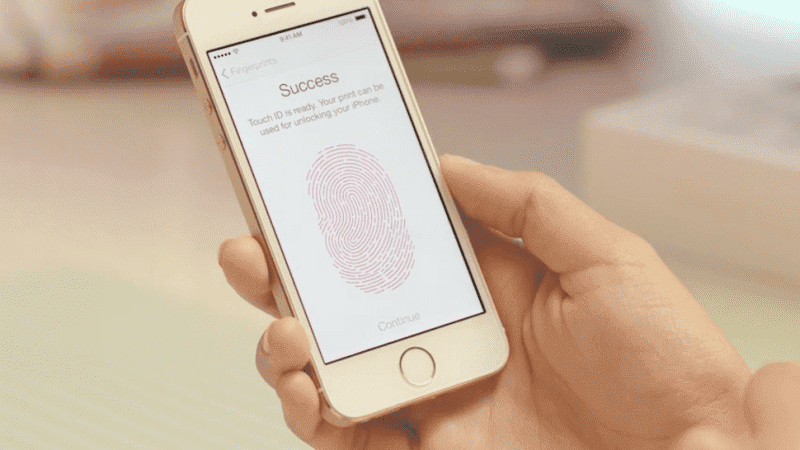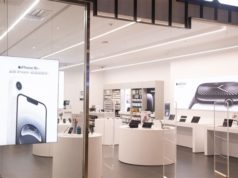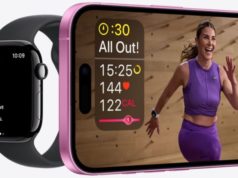![]()
Will the next iPhone include biometrics? Possibly, as a new beta version of Apple’s iOS software, released Monday for developers, contains fingerprint scanning technology.
Beta 4 of iOS 7 includes code for biometric scanning, according to developers sites. The code, in a folder called BiometricKitUI, handles fingerprint recognition from a left or right thumb placed on an iPhone.
The code also includes a tutorial section containing a description of a photo of a person holding the iPhone with their right hand “while touching the Home button with their thumb.” One obvious use for a fingerprint scanner would be as a replacement for the lock screen code now used.
Purchase of AuthenTec
Almost exactly a year ago, Apple spent $ 356 million to buy a company called AuthenTec, which provided fingerprint sensor and identity management technology for mobile ![]() devices, as well as for governments and networking companies. One of AuthenTec’s customers before the acquisition, interestingly, was Apple’s arch-competitor in the mobile space, Samsung. In regulatory filings related to the acquisition, Apple mentioned it was eager to complete the purchase in order to add fingerprint sensors to its devices.
devices, as well as for governments and networking companies. One of AuthenTec’s customers before the acquisition, interestingly, was Apple’s arch-competitor in the mobile space, Samsung. In regulatory filings related to the acquisition, Apple mentioned it was eager to complete the purchase in order to add fingerprint sensors to its devices.
Code found in a beta version of an operating system does not necessarily mean that the supported feature will appear anytime soon. Apple could be preparing its platform for fingerprint and other identity technologies at a future date. A new iPhone is expected to be released within a few months.
However, in addition to the AuthenTec acquisition and the buried iOS code, another piece of evidence is that Apple received a patent last fall for a biometric unlocking mechanism in its products. That patent described a hidden biometric scanner used in a two-step unlock screen feature, living under the screen of an Apple device ![]() and becoming visible through an action by the user, such as pushing a Home button. The scanner could be used for fingerprints, face recognition, or eye scanning, any of which could serve a second factor in two-factor authentication.
and becoming visible through an action by the user, such as pushing a Home button. The scanner could be used for fingerprints, face recognition, or eye scanning, any of which could serve a second factor in two-factor authentication.
Transparent Computing
There had been rumors that Apple would utilize near-field communication as a way to authenticate users without passwords, although the technology giant has been discouraging that line of thinking.
Biometric identity recognition could provide a major differentiator for iPhones, as other smartphones have begun to match Apple feature for feature, and, in some cases, are offering functionality that Apple does not. Remembering passwords remains an onerous responsibility in this world of many log-ons, so being able to log-on simply with your natural identifiers could again give iPhones a boost in ease of use.
Of course, natural identity verification is also very appealing to every other device maker. Intel, for example, has been pushing the idea of “transparent computing,” which would include biometrics as a way to facilitate natural computing and would employ scans of a user’s entire palm via a scanner or camera. Intel has said that a palm print is more accurate than a fingerprint and is more difficult to lift from a user’s device. Other device makers, such as Motorola, have also released products with fingerprint sensors, although such identifying technology has not yet caught on.
NewsFactor Network







